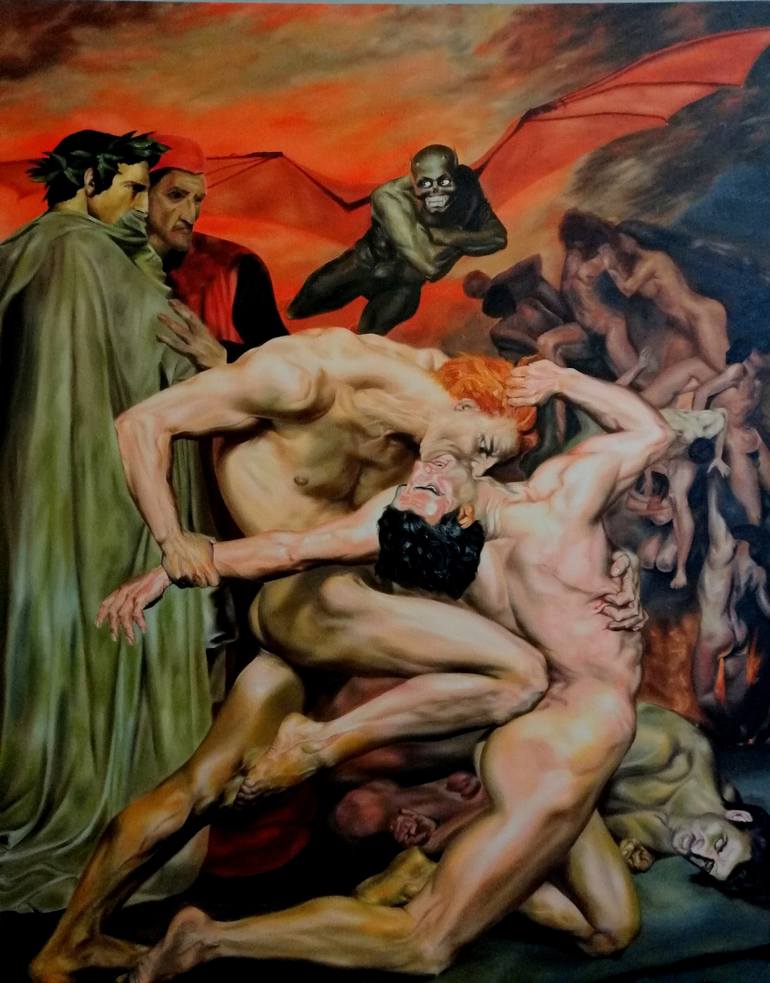







VIEW IN MY ROOM
Dante and Virgil Painting
Netherlands
Painting, Oil on Canvas
Size: 43.3 W x 53.1 H x 0.8 D in
Ships in a Tube
About The Artwork
Dante and Virgil in Hell is oil on canvas and currently hangs in the Musée d'Orsay, in Paris. It was painted in 1850 by William-Adolph Bouguereau. It is a one-off, the artist never returned to this theme; maybe the intensity of the scene brought hell too close for comfort! The picture shows us Dante, accompanied by Virgil, wandering through the eighth circle of hell, the sector reserved for counterfeiters and falsifiers. They stop to witness an infernal combat, an unending fight to the death. The horror of the action is forceful: we see one combatant savagely biting the neck of the other while brutally kneeing his back. The desperation and the agony is strongly evident in the tense, straining muscles and the determined, combative faces. Yet, there is beauty here: the perfect, muscular bodies are depicted in harmonious lines which suggest a bold, supple strength. There is nothing static about the positions of the bodies, the scene is a fleeting moment of the combat - we fully perceive the movement and the fury of the fight. This horrific fight is between two damned souls, both condemned to eternal combat. The hellish circle they inhabit is the eighth circle, reserved for those who cheat, falsify and counterfeit in order to immorally or illegally improve their lot at the expense of others. The biting fighter, Gianni Schicchi, is a usurper who fraudulently adopted a dead man's identity in order to obtain an inheritance. He was duly sent to hell. The other fighter is an alchemist and heretic called Cappocchio. In an age when heresy and alchemy were deadly sins, hell was the inevitable final destination.
Details & Dimensions
Painting:Oil on Canvas
Original:One-of-a-kind Artwork
Size:43.3 W x 53.1 H x 0.8 D in
Frame:Not Framed
Ready to Hang:Not applicable
Packaging:Ships Rolled in a Tube
Shipping & Returns
Delivery Time:Typically 5-7 business days for domestic shipments, 10-14 business days for international shipments.
Handling:Ships rolled in a tube. Artists are responsible for packaging and adhering to Saatchi Art’s packaging guidelines.
Ships From:Turkey.
Have additional questions?
Please visit our help section or contact us.
Netherlands
Born in Bursa, Turkey 1997.
Thousands Of Five-Star Reviews
We deliver world-class customer service to all of our art buyers.
Global Selection
Explore an unparalleled artwork selection by artists from around the world.
Satisfaction Guaranteed
Our 14-day satisfaction guarantee allows you to buy with confidence.
Support An Artist With Every Purchase
We pay our artists more on every sale than other galleries.
Need More Help?